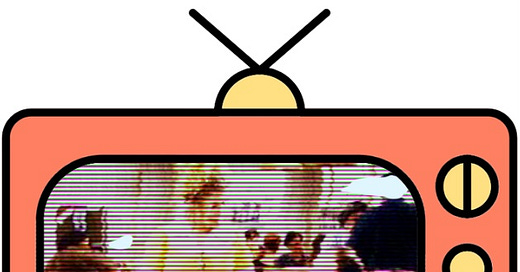Now everything's a little upside down As a matter of fact the wheels have stopped What's good is bad, what's bad is good You'll find out when you reach the top You're on the bottom
Bob Dylan
My Catholic school days taught me a lot albeit little I was supposed to learn. For one thing, I was quite a freethinker by parochial school standards. I had wild, wild thoughts and too often even blurted them out, which I am certain thoroughly endeared me to my classmates and to my teachers.
Indeed, my attempts at being true to myself and to my intellectual pursuits were so universally well-regarded that by the end of sixth grade, I had become afraid to raise my hand. The bullying from classmates I learned to deal with, but the teachers were another thing. My classroom silence lasted all the way through college.
Still, being a curious kid — that is, both inquisitive and odd — I often made pronouncements that annoyed or bored my classmates. Usually these occurred well outside the classroom.
One time — and somehow I remember the location but not the circumstance or the topic — my few friends and I were in the schoolyard, which was really just the church parking lot, and someone said something along the lines of, “if this thing is not true, then it’s opposite must be true.” Perhaps you will be surprised to learn that my reproduction of this statement is not verbatim.
That half-baked observation struck me in an instant. It was a profundity that warranted a reply in the style that only I among our little group had mastered, the understated manner I had carefully nurtured to defend myself in that hostile educational environment. I replied something along the lines of, “don’t be stupid. Just because X is wrong doesn’t mean -X is right, you idiot.”
I am sure we had substantial discussion about the propriety of name calling, which would itself undoubtedly involve a good deal of name calling on both sides, but inevitably we would have settled down into a more philosophical exchange, arguing our points, Plato-like, well until we were called in from recess.
Sadly, I think in that moment I hit on the first and best truth I have ever hit on. The idea that just because something is wrong doesn’t mean its direct opposite is right has stood me in good stead throughout my life. It has protected me from the lure of knee-jerk contrarianism and fostered my more individualist or even iconoclastic outlook.
The Opposite
Don’t get me wrong. There is much to be said for doing the opposite. In fact, I love counterintuitive thinking and use it frequently in my approach to life and to my writing. It’s just that just doing the opposite is no less absolute than just staying the course. Few things in life are so linear. For instance, think of how you got to where you are now in life. Was your path a series of straight-up choices like climbing a ladder, or was the way more convoluted than that?
There is a great Seinfeld episode that plays off the power of doing the opposite. In it, George, the schlemiel character, realizes that every choice he has ever made is wrong. He decides on the spot — the spot being the corner diner — to change it up and do the opposite of what he normally does. Instead of his usual lunch he orders chicken salad on rye, which in his mushy mind is the opposite of his regular tuna on toast.
“Nothing’s ever worked out for me with tuna on toast,” he defiantly proclaims. Cue laughter.
He then, against his every inclination, approaches an attractive woman and boldly states, “My name is George. I’m unemployed and live with my parents.” Despite his evident shortcomings, he gets a date, and that date leads to an unlikely job interview with the New York Yankees. During the interview, George encounters George Steinbrenner, the Yankees’ overbearing owner, and, again defying his instincts, proceeds to lambast Steinbrenner to his face. Steinbrenner hires him right then.
If only such were the way in the real world. Then again, who among us would choose to live in Seinfeld’s world? I mean aside from Jerry Seinfeld.
Opposing the Opposite
It’s true that choosing to do the opposite of what you know to be wrong will improve your chances of doing right if only because you are avoiding that wrong thing. But the opposite is no panacea, George Costanza’s experience aside. Thoughtlessly doing the opposite will work, but only with stopped-clock accuracy — that is, only when the time and circumstance happen to align. Therefore, it behooves us, when faced with an obvious wrong choice, to seek out the right choice as best we can.
Aside from inconsistent results, merely choosing to do the opposite has some other ramifications we must consider. For one, regularly doing the opposite sets up a world where there is only X and -X, which is almost always a false dichotomy. There are rarely only two choices.
Think of an elevator. Before you board, you will only have two directions to choose, up or down, right? Upon boarding, though, there will be several floors to stop at, each of which is itself an option. And then there’s always that terrifying alternative to the elevator called “the stairs.” Or you could just wait in the lobby and not go anywhere, one more possibility still. Come to think of it, Batman seems to have forged his own methods for accessing the top floors. See? Far from there being only two choices, the possibilities turn out to be numerous, perhaps endless.
Besides, it would be silly to assume that the right choice is the exact opposite of the wrong choice — “I went up on the elevator last week on my way to talk to the boss, and he yelled at me. Therefore today I will press the down button to get to his office. After all, once bitten, twice shy.”
More often than we care to admit the best choice is to abandon the question altogether, leave the building, go for a walk, and enjoy a park. Just give the boss the slip and live the good life. If we instead limit ourselves only to doing the opposite, we are left with just two options even though options abound, a true false dichotomy.
The other danger of just doing the opposite, choosing -X as the winner every time, is that it creates a sense that our world is populated by only absolute winners and absolute losers — a zero-sum game — which is itself a false dichotomy. The binary philosophy of zero-sum is a pathology that infects the likes of bullies, sociopaths, my sixth-grade teacher, and other miscreants.
I don’t mean to suggest that George Costanza is a sociopath for switching to chicken salad. But, then again, there was that series finale…
The zero-sum approach, because it sees winning as an absolute necessity, becomes a justification for lying, cheating, deception, and other destructive behaviors. That is ultimately where the binary logic of choosing X or -X leads. A world where there are only two possibilities is a two-dimensional world, flat, featureless, and as distorted and misleading as a Mercator world map.
——
The truth is that sometimes doing the same or obvious thing is the right choice, sometimes doing the opposite of that is the right choice, and sometimes doing something entirely else is the right choice. And don’t forget that doing nothing at all is itself a choice, and it too could be right or wrong. The key is in that phrase, “the right choice.”
Our decisions are typically driven by invisible habits and paradigms that serve a purpose at first but that become hindrances over time. Of course you cannot and should not throw out all your habits and practices, but it is important to recognize them for what they are and to act accordingly. B.J. Fogg of Tiny Habits fame teaches us that we can create healthy new habits, that we can master the skill of change and allow positive change to be a force for good in our lives.
The trick is to understand that maybe tuna on toast is a satisfying lunch, but a big salad from time to time may be even better.
How do you know when to just do the opposite or even throw out the old models and start from scratch? What can result from doing so?
Learning to be a great leader requires you to be able to add, subtract, and balance when you make decisions, and I can help. Click below for your free consultation.
Share your thoughts on this topic or participate in a discussion by leaving a comment below or by contacting me directly by email:
You’ll need to register with Substack to leave a comment, which is painless and free.
Please share this post on social media.
And don’t forget to click subscribe to have On Leading with Greatness sent weekly to your inbox. I look forward to hearing from you.
Intro and outro podcast theme music by LiteSaturation from Pixabay.
















Share this post